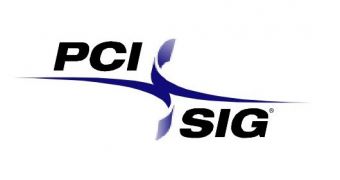It seems that motherboards might soon start to incorporate a new type of PCI Express slot now that PCI-SIG has finalized the latest standard, one which brings many benefits over PCI Express 2.0.
Basically, PCI-SIG has finished the PCI Express 3.0 specification, the standard which was known to be almost ready since about two months ago.
One thing that the new technology uses is a 128b/130b encoding scheme, whose merit is ensuring an efficiency of almost 100%.
It also has a data rate of 8 GT/s and a bandwidth of 32 GB/s on an x16 configuration, even as it retains backwards compatibility with PCI Express 2.0.
Other assets include certain enhancements to some elements, like latency tolerance reporting, I/O page faults, dynamic power adjustment mechanisms, data reuse hints and architectural stability, among other things.
“The PCI-SIG remains dedicated to I/O innovation and we are proud to release the PCIe 3.0 specification to our members,” said Al Yanes, PCI-SIG chairman and president.
“The PCIe 3.0 architecture details significant improvements over our two previous PCIe specifications, providing our members with the performance and functionality they need to continue to be innovators in their fields,” Yanes added.
“Each new version of the PCIe spec has doubled the bandwidth of the prior generation,” said Nathan Brookwood, research fellow at Insight 64.
“The latest group of PCIe architects and designers drove the standard forward while maintaining complete backward compatibility for Gen 1 and Gen 2 devices,” he also stated.
“Rarely has a standard advanced so non-disruptively through three major evolutionary cycles. The ability to pull this off demonstrates not only the ingenuity of the Gen 3 developers, but also the insight of those who defined the earlier versions in such an extensible manner,” Brookwood went on to saying.
PCI-SIG members already have the new specification available and 2011 should see the rise of the first devices compatible with it.

 14 DAY TRIAL //
14 DAY TRIAL //